Haworthias are small and attractive succulents that have become widely popular. Since they are succulents, they don’t need a lot of maintenance. But neglecting them due to their high tolerance levels can turn them white.
The primary cause of haworthia turning white is exposure to direct sunlight, overwatering, and powdery mildew. Always check the soil before watering, and make sure you let the soil dry out before you water again. Also, use neem oil to keep pests and bugs away.
I will discuss the reasons behind the problem and solve it in this guide today. With adequate care and supervision, Haworthias will be healthy again. You just need to learn the right reason and treatment.
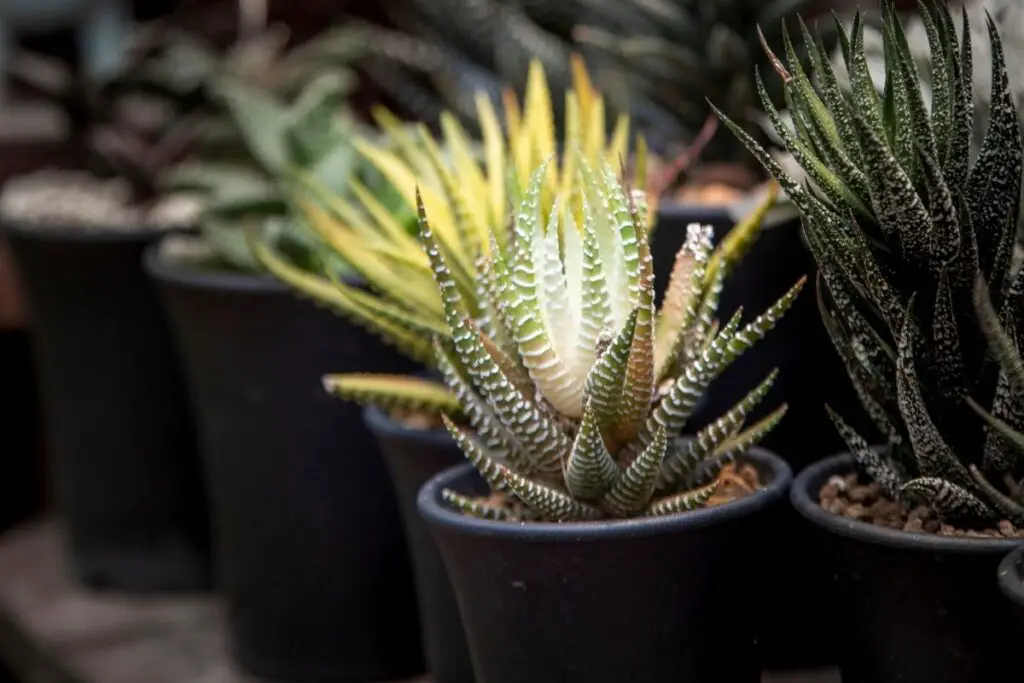
Why is my Haworthia turning white?
Haworthias are also called zebra succulents because of their white stripes over long, rich green foliage.
When they experience some stress, the foliage starts turning white.
I have discussed seven reasons behind the problem and the fixations.
If your Haworthia is facing any of these, treat them quickly as suggested.
Sun stress
Haworthias can adapt themselves to direct sunlight to some extent, but it is better to keep them under bright indirect sunlight.
Under the direct sun, there are higher chances of getting sunburned.
When they get burnt, they turn brown.
But, white leaves are caused due to anthocyanin.
When the plant receives direct sunlight, it produces a pigment called anthocyanin to protect itself from sunburn.
Too much production of this pigment makes the leaves white.
How to protect Haworthias from direct sunlight?
If you find the plant turning white and getting direct sunlight, put on transparent shades to filter it.
You can add tall potted plants to handle direct sunlight in front or beside them.
Direct sunlight can pass through them and give Haworthias filtered sunlight.
Before you plant them, choose an ideal direction in your garden that receives less intense sunlight.
Try the eastern direction because it is known to give soft morning sun.
If you want to give them direct sun, first prepare them.
Expose them to sunlight for one hour for the first time.
Then, gradually increase the timing.
Also read: How Much Light Does Haworthia Need? (Haworthia Light Requirements)
Looking for gardening supplies? We have tested 100's of products before recommending them to you guys. Check out our best pick below:
| Image | Gardening Supplies | Best Price? |
|---|---|---|
 Top
Top Top
Top | Raised Garden Bed Kit | Check On Amazon |
 | XLUX Soil Moisture Meter, Plant Water Monitor, Soil Hygrometer Sensor for Gardening, Farming, Indoor and Outdoor Plants, No Batteries Required | No Results |
 Top
Top Top
Top | 82 Pcs Garden Tools Set and Extra Succulent Tools Set | Check On Amazon |
 | Joeys Garden Expandable Garden Hose with 8 Function Hose Nozzle, Lightweight Anti-Kink Flexible Garden Hoses, Extra Strength Fabric with Double Latex Core, (50 FT, Black) | No Results |
 Top
Top Top
Top | Dual Chamber Compost Tumbler | Check On Amazon |
 Top
Top Top
Top | Sunnyglade Plant Stakes | Check On Amazon |
 Top
Top Top
Top | Organic Cold Pressed Neem Seed Oil | Check On Amazon |
 Top
Top Top
Top | Mighty Mint Gallon :-Insect and Pest Control Peppermint Oil | Check On Amazon |
 Top
Top Top
Top | Scotts DiseaseEx Lawn Fungicide | Check On Amazon |
 Top
Top Top
Top | Jacks Classic 20-20-20 All Purpose Fertilizer | Check On Amazon |
 Top
Top Top
Top | 30,000 Seeds Pollinator Attracting Wildflower Mixture | Check On Amazon |
 Top
Top Top
Top | Survival Vegetable Seeds Garden Kit-Over 16,000 Seeds | Check On Amazon |
Improper watering
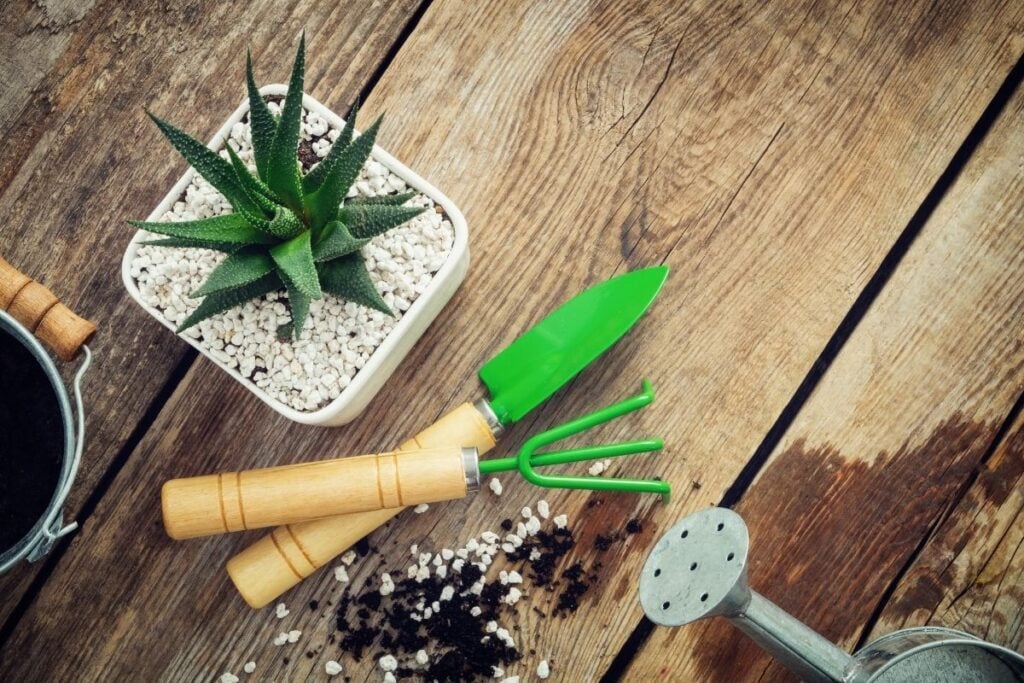
There are two watering problems – overwatering and underwatering.
Haworthia turning white is the result of overwatering.
Check the lower leaves, stems, and soil when the plant turns white.
The leaves and stems will feel mushy, and the soil will be wet and cold.
These are indications that your plant is suffering overwatering.
All the succulents must experience a period of dry environment.
Their roots must not stay wet all the time.
Haworthia, too, will not like to stay damp always.
It will further result in root rot.
How to save Haworthia from overwatering?
When you check the soil and leaves and identify overwatering, stop watering.
Watch the plant’s reaction for some days.
To prevent it, wait for the soil to dry out and then water them.
Wait until the top 1-2 inches of the soil gets dry.
Water Haworthia every 2-3 weeks.
Haworthia won’t require frequent watering.
If you neglect the signs, they will undergo root rot one day.
In that case, you have to take the plant out, remove the damaged roots and transplant them to a dry location.
Also read: How Often To Water Haworthia? (Haworthia Water Requirements)
Poor drained soil
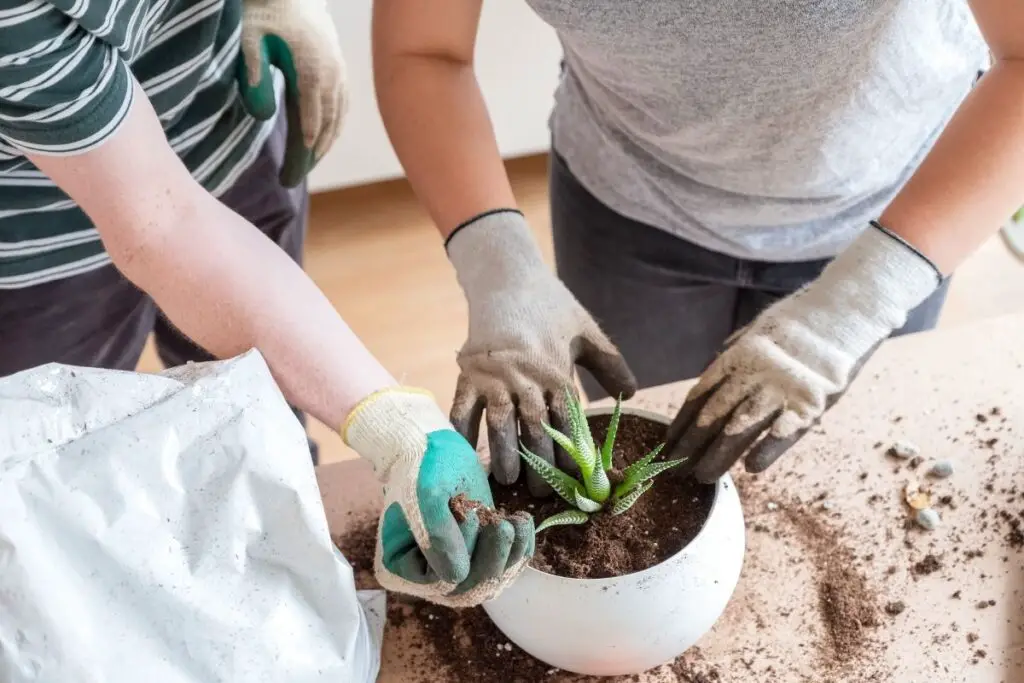
Haworthia turning white due to prolonged dampness also happens due to poor drainage, besides overwatering.
When the soil doesn’t drain excess water, the roots remain damp for a long time.
The result is white leaves.
Sometimes, infertile soil could be the reason behind white leaves.
Over time, the soil gets depleted by constant watering.
Without adequate nutrients, the plant will not grow well and lose its rich green color.
As a result, they will fade and turn white.
How to improve soil quality?
Use soil that supports good drainage and porosity.
You can use perlite, coir, scoria, horticultural pumice, poultry grit, and aquarium gravel to the soil bed to improve drainage.
Go through our soil article for more information.
These soil ingredients can also give your Haworthia enough nutrients they need.
Otherwise, you have to fertilize them with a low-balanced fertilizer.
A fertilizer with NPK 3-1-2 is best for them.
You can use cactus potting soil for potted Haworthias.
You won’t have to put any extra effort as this soil is readymade and perfect for these succulents.
You can use soil combined with fertilizer.
It is great for optimal drainage and a balanced pH level.
One example is Fat Plants San Diego Premium.
Also read: What Soil To Use For Haworthia? (+Ideal Soil Mix)
Pot drainage and size
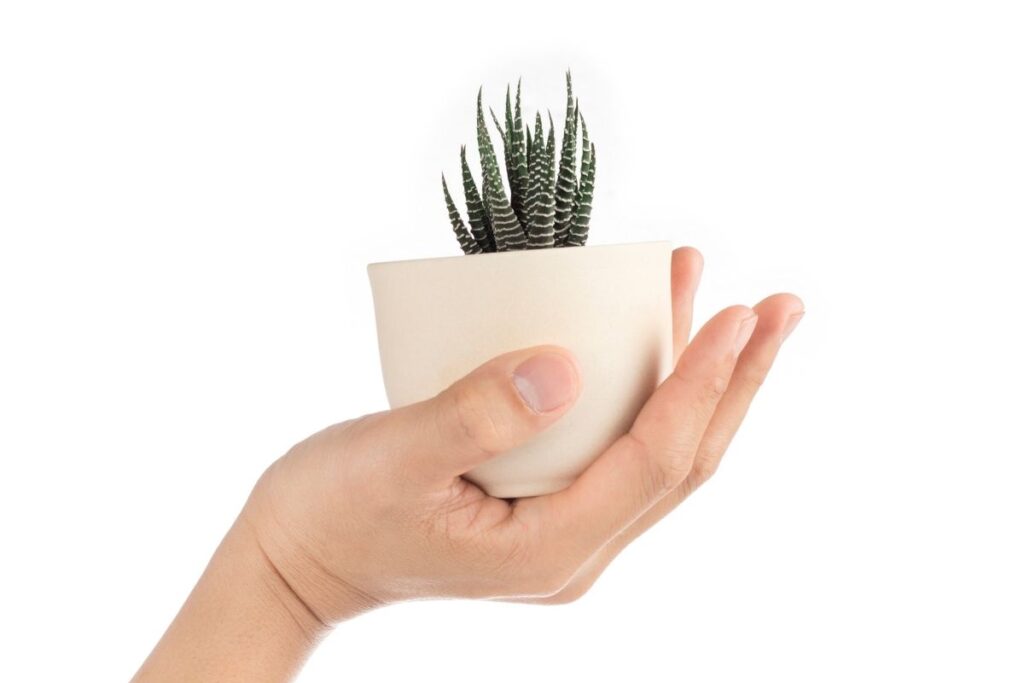
When it comes to drainage, containers strike the mind.
Since Haworthias are quite small, many gardeners keep them in pots.
They look good.
The pot must have drainage holes to flow off excess water.
Otherwise, the roots will experience prolonged dampness, causing white and mushy foliage.
How to improve pot drainage?
For pot drainage, use a container with drainage holes.
If there is no hole or a very small hole, drill more holes or increase the size to let water flow easily.
Along with drainage, also take care of the size.
An oversized pot will also result in overwatering.
A big pot needs more soil which takes forever to get dry.
So, choose an ideal-sized pot.
Pest infestation
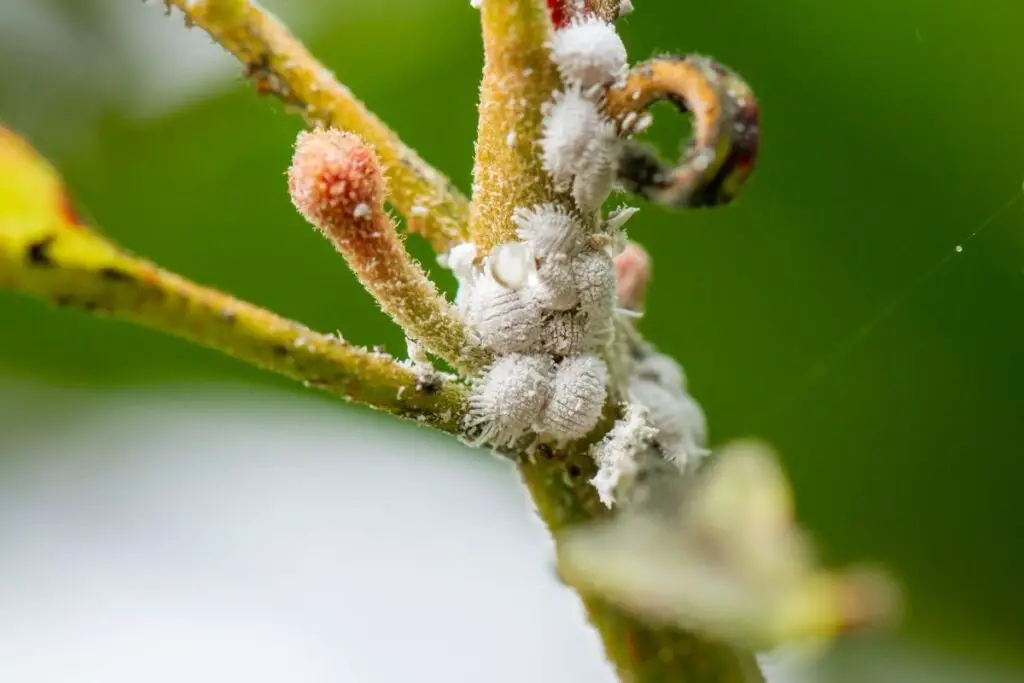
You will find small white spots all over the foliage.
These are mealybugs.
They feed on the saps of the plant and turn the plant pale and white.
Other bugs like spider mites, aphids, or fungus gnats can also make the leaves white.
You must terminate these pests from the plant.
These insects affect Haworthia and other plants present in your garden.
You must keep a daily check on your Haworthia.
Whenever you see any such signs, check the plant and take immediate steps if you find the presence of pests.
How to get rid of pests?
There are many options for removing pests like rubbing alcohol, neem oil, or other harmless pesticides.
Use them on the infected area.
Continue it until the problem gets resolved.
Soak a cotton ball with rubbing alcohol and dab it on the infected area.
You can also spray it by diluting it and making the strength mild.
Spray neem oil to the infected area.
If you are using neem oil, make sure not to expose the plant to direct sunlight after using it.
It can burn the leaves.
Apply neem oil in the night instead.
There are many eco-friendly pesticides available for Haworthia and other succulents.
You can use them if the above two methods don’t work well.
Don’t use water-based pesticides for mealybugs.
Mealybugs have a white wax coat that protects them from pesticides.
However, dabbing rubbing alcohol can weaken this shield.
Also read: Haworthia Pests Problems: Common Pests+How To Eliminate
Powdery mildew
Another common reason behind white Haworthia is powdery mildew.
Those who deal with plants daily must know what this mildew is, and that is why most people suspect whitish spots in the plants as mildew.
Powdery mildew is a fungal disease occurring due to high humidity, prolonged dampness, and hot weather.
As the name suggests, the leaves will have whitish spots which look like spreading talcum powder.
To confirm the issue, check the stems.
The stems will be brown due to this fungus.
How to treat powdery mildew?
To treat this fungus disease, you need to reduce humidity and dampness and increase ventilation.
Most probable, the indoor plants suffer the most.
For outdoor plants, keep space between them to allow proper airflow.
According to the weather, if the weather is too hot, put on shade and increase watering slightly.
Always check the moisture level before doing it.
Don’t overwater them.
Keep the plant away from the kitchen, bathroom, aquarium, and fireplaces for the indoor plants.
Place them in an open space.
That is why outdoors are best when it comes to humidity.
You can also fix de-humidifiers indoors.
Spray some eco-friendly or organic fungicides and continue until the plant is free from the fungus.
Natural changes
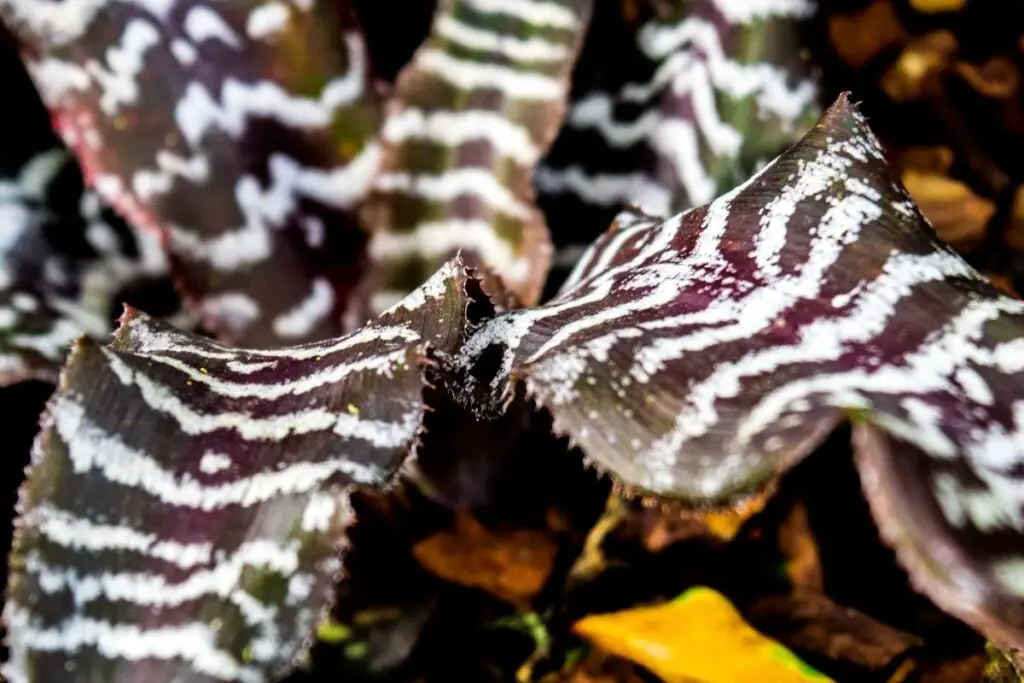
Haworthias will shed their leaves to grow more new leaves.
Due to this, the old leaves might look pale white or yellow.
It is expected mostly during their growing seasons.
Another reason is seasonal.
When winter arrives, the leaves will start turning white. It is also natural.
This color change is due to the season change.
There is no danger or stress for these two reasons.
Since these are completely natural, there is no fixation for them.
How do I prevent Haworthia from turning white?
You can prevent Haworthia from turning white by taking proper care of the succulent.
Let’s understand how.
| Factor | Care Requirements |
|---|---|
| Light | Keep Haworthias under bright indirect sunlight. It saves them from getting sunburned. If they are indoors, put on sheer curtains in front of the window to filter the light. If they are outdoors, put on shading cloths or nets. If you want to adapt them to direct sunlight, do it gradually. In the case of low lights, use artificial lights. You still need to protect the outdoor Haworthias from the hardest days of the summer when the sun intensity is at its peak. |
| Water | Haworthias do best when watered every 2-3 weeks. Let the soil dry before you water them again. Instead of following any strict routine, water them the soil gets dry. Don’t water them during the summers because they stay dormant. Water the plants less in the winters due to low evaporation. In these two situations, the plant won’t accept too much water. Watering them can cause overwatering and root rot. |
| Soil | The soil must be gritty, well-drained, and should also retain moisture. A poorly drained soil can keep the roots wet for a long time and rot them. For potted plants, you can use a commercial cactus potting mix. For garden Haworthias, you can mix perlite, pumice, scoria, coarse sand, or gravel to the soil to improve drainage. These will also help in giving the plant adequate nutrients. |
| Pot | This is applicable for potted Haworthias. If your plant is in the ground, avoid it. Choose a pot that is based on the plant size. Don’t use a too-large pot. It will take too much soil, which can take a long time to dry. As a result, the roots can stay wet for too long and rot. Also, ensure the planter contains drainage holes to flow out excess water. |
| Temperature | Uphold their ideal temperature in the surrounding. Don’t let your Haworthias stay in freezing weather outside. Protect them from cold temperatures by having some tall trees or shade around them outdoors on the ground. This is very rare because most people grow them in containers and take them indoors in such weather. If your region doesn’t get such low weather but a cool one, you can keep them outdoors without any issue. During hot weather, shade is a must to protect from sunlight. Moreover, they will stay dormant due to extremely high temperatures. You need to be careful with watering and fertilization during dormancy. |
| Fertilization | Soil alone cannot give the Haworthias all the nutrients they need. You have to provide them with those nutrients separately by fertilizing them. Fertilize these succulents once during the spring and again once in the fall. Use organic fertilizers as they don’t hurt the plants much. During the summers, Haworthias stay dormant and thus won’t utilize any nutrients. In the winters, too, the plant slows down its growth. Don’t fertilize them during these two seasons. |
| Ventilation | Outdoors, you can always take care of proper air circulation. Instead, you need to worry less about it. The plant will get airflow outdoors, in an open space. Just make sure to plant the plants by keeping adequate distance between them. Indoors, you need to take care of it separately. It becomes dangerous if the humidity gets high too. Keep the plant in an open space, and don’t place your plant near the bathroom or kitchen. Outside is best for good ventilation. |
Final thoughts on Haworthias turning white.
Lots of reasons might be responsible for Haworthias turning white. It is tough to identify the exact problem by witnessing only whiteness.
Try to check for other signs. Every issue will show you some specific signs to identify the real problem. Also, observe the plant’s condition closely.
Gardening is all about trial and error. Don’t hesitate to try everything for the plant. It helps you to gather knowledge about the best care needed for Haworthias.
Reference: The Haworthia Society, Botanical Studies, University of Wisconsin-Madison, Sciencedirect, Researchgate, Haworthia Study.
